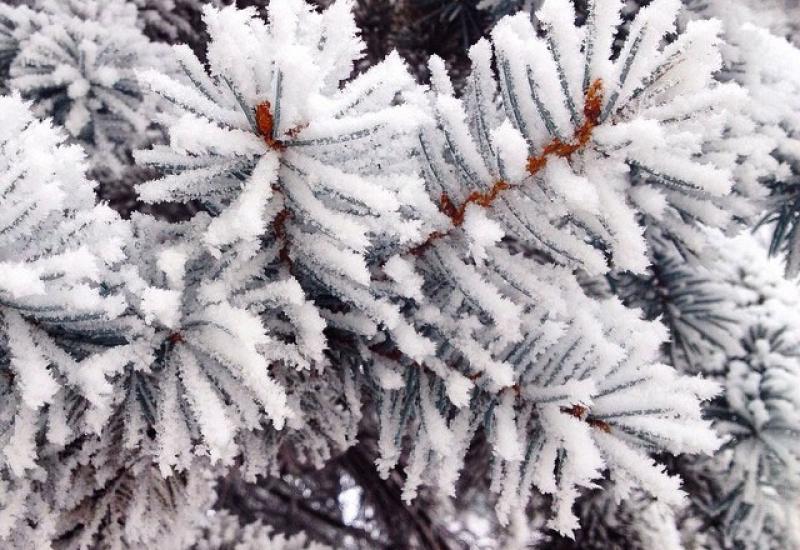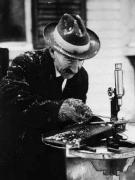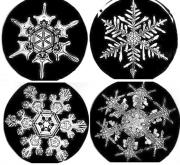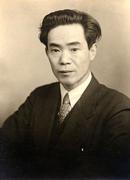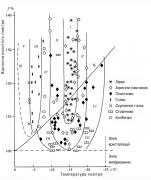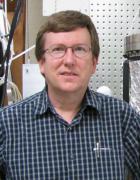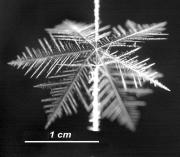"There are no two identical snowflakes." Probably everybody heard this phrase. But few know that it was first written by Wilson A. Bentley (Wilson Alwyn Bentley) - american farmer who became famous through his photographs of snowflakes.
He was born February 9, 1865, in a family of a farmer near the town of Jericho in Vermont USA. In winter there fell out a lot of snow, and perhaps because of this he had such an unusual hobby.
60-year-old Bentley recalled:
"Up to the age of fourteen I did not go to school. My mother taught me at home. Prior to marry my father she was a teacher and she gave me a love for knowledge and for beauty. She had many books, among them - several encyclopedias . I have read them all.
My mother made me a present at my 15 years birthday which defined all my future life. It was a small microscope, which she used when taught in school. While the other boys my age were playing with slingshots and toy guns, I just immersed in the study under the microscope: water drops, tiny fragments of stone, bird feathers, which had fallen from a height, thin veins of flowers.
But always, from the beginning it was snowflakes that fascinated me the most. Farmers in our north country are afraid of winters, but I was extremely happy since the first snowfall, which usually fell in November to the last, which is used to going and the end of May. "
Over the next two winters young Bentley often regarded snowflakes in the microscope. Fascinated by their beauty, he tried to draw snowflakes, made hundreds of attempts, but realized that he could not depict what he saw. Then he discovered the existence of cameras that can take pictures through a microscope, and persuaded his father to buy him the one. Then, there were experiments, and finally January 15, 1885, he made the world's first snowflakes micrographs. Note that the snowflakes under a microscope first were seen by Robert Hooke. A few pictures of snowflakes, he published in the book "micrograph" (1665).
Then Bentley every winter did shots of snowflakes, and for 13 years has made them more than four hundreds. Professor George Perkins of the University of Vermont found out about Bentley hobby and invited him to write an article about snowflakes. The article was published in 1898 in the "Appleton's Popular Scientific Monthly" (Wisconsin).
Subsequently, Bentley has published over a hundred articles on the snow and rain in newspapers and magazines - Country Life, National Geographic, The New York Times Magazine and others. He tried to give all his admiration for the beauty of snowflakes. His article "Taking snowflakes" (Popular Mechanics. 1922. Vol. 37, pp. 309-312), provides practical advice on photographing snowflakes, begins:
"Every snowflake has an incredible beauty, accented by the realization that the researcher will likely never find another the same. So, these photographs swiftly passing works of nature gives researchers a sense of pioneer. In addition, combining the highest skill and elegance to manufacture snowflakes, nature does most beautiful examples of fine, if specially adapted for micrograph research. "
Bentley also began lecturing - and not just in the surrounding cities, but also in academic institutions such as the Museum of Science in Buffalo and Franklin Institute in Philadelphia. He prepared lists of slides of snowflakes, dew, frost, snow clouds, which sold for a small fee to many colleges and universities, where they were used during the reading of relevant lectures. The well illustrated article "Snow" in the 14th edition of the Encyclopaedia Britannica included pictures taken by Bentley.
In the 1920s thousands of people knew Bentley not by name, but as "Snowflake Man". In 1924 he received an award from the American Meteorological Society "for 40 years, extremely hard work," which was the recognition of the importance of his research.
A few years later, Dr. William J.. Humphreys of the US Weather Bureau in response to numerous requests for the need to preserve one of the best collections micrographs Bentley decided to publish them in a book. The book of W.A.Bentley and W.J. Humphreys "Snow Crystals" was published in November 1931 It included almost 2500 Bentley micrographs, which contained about a hundred pictures of frost and dew, and the rest - snowflakes.
In December of that year, Wilson A. Bentley again continued photographing snowflakes, but because of a too long being in a cold, he catched cold and December 23, 1931, died of pneumonia.
In the US the memory of "Man-snowflake" is honored. There is the official site Wilson A. Bentley - http://snowflakebentley.com/, where you can find materials about him, and his photos and articles. Exquisite souvenirs are made from the Bentley pictures of snowflakes. Buffalo Museum of Science has created a digital photo library Bentley (http://bentley.sciencebuff.org/). Unique, not like any other snowflakes that Bentley saw and photographed a hundred years ago, can be seen by everybody.
Ukichiro Nakaya in 1931 became professor of physics at the University of Hokkaido ( Sapporo). There were no conditions for research of long-wavelength X-rays, which he worked before. After reading the book Humphries and Bentley Nakayya decided to explore the snow crystals. There is plenty of material for research, there are heavy snowfalls durung a winter in Sapporo. In 1932 Nakayya began to photograph snowflakes and for several years made more than 3,000 photographs, and, unlike Bentley, photographed not only beautiful specimens, but all in a row. Then he began to develop a classification of snow crystals in form - divided them into 40 categories. Next Nakayya decided to investigate how snow crystals form depends on the conditions in which they are formed. In 1935 he set up a small refrigerated laboratory, where he could grow snow crystals, adjusting widely temperature and humidity, and March 12, 1936 grew the first snowflake.
After years of research Nakayya in 1954 published the book "Snow Crystals: natural and artificial." Briefly, the main results of his research are presented in the chart, which is now called Nakayyi diagram. Using this chart, from the snowflakes form you can draw conclusions about the conditions of the atmosphere in which they were formed. Therefore Nakayya called snowflakes "letters from heaven written in secret characters."
Now in his hometown U.Nakayyi Kaga there is a unique museum in the world of snow and ice that bears his name.
In the ХХІ century the professor of physics Libbreht Kenneth (Kenneth Libbrecht) from the California Institute of Technology performed the research of snowflakes growth. He experimented, in particular, with laser cooling and seizure of individual atoms, made a research of convective motions in the Sun, semiconductor lasers (see. Http://www.its.caltech.edu/~atomic/). He investigated snowflakes as part of the "Physics of crystal growth and circuit formation in the ice." The aim was to study the growth of ice crystals from the vapor phase as an example of the formation of structures in nonlinear nonequilibrium systems.
Modern technology, including digital cameras and movie cameras specially designed artificial lighting gave him the opportunity to obtain unprecedented results, including - determining the rate of growth of various facets of ice crystals under controlled conditions artificially grown one inch diameter snowflake (pictured), color films show growth process snowflakes.
His results and tips professor gladly shares with all willing. At http://www.its.caltech.edu/~atomic/snowcrystals/ he created a true Internet guide to snowflakes around the world. There are photos of natural and artificial snowflakes, movies, allowing them to see growth articles with tips on photographing snowflakes and others.
In conclusion, I want to appeal to those photographers who are trying to do unique photos. Take shots of winter snowflakes! Because there is no two identical snowflakes!

